



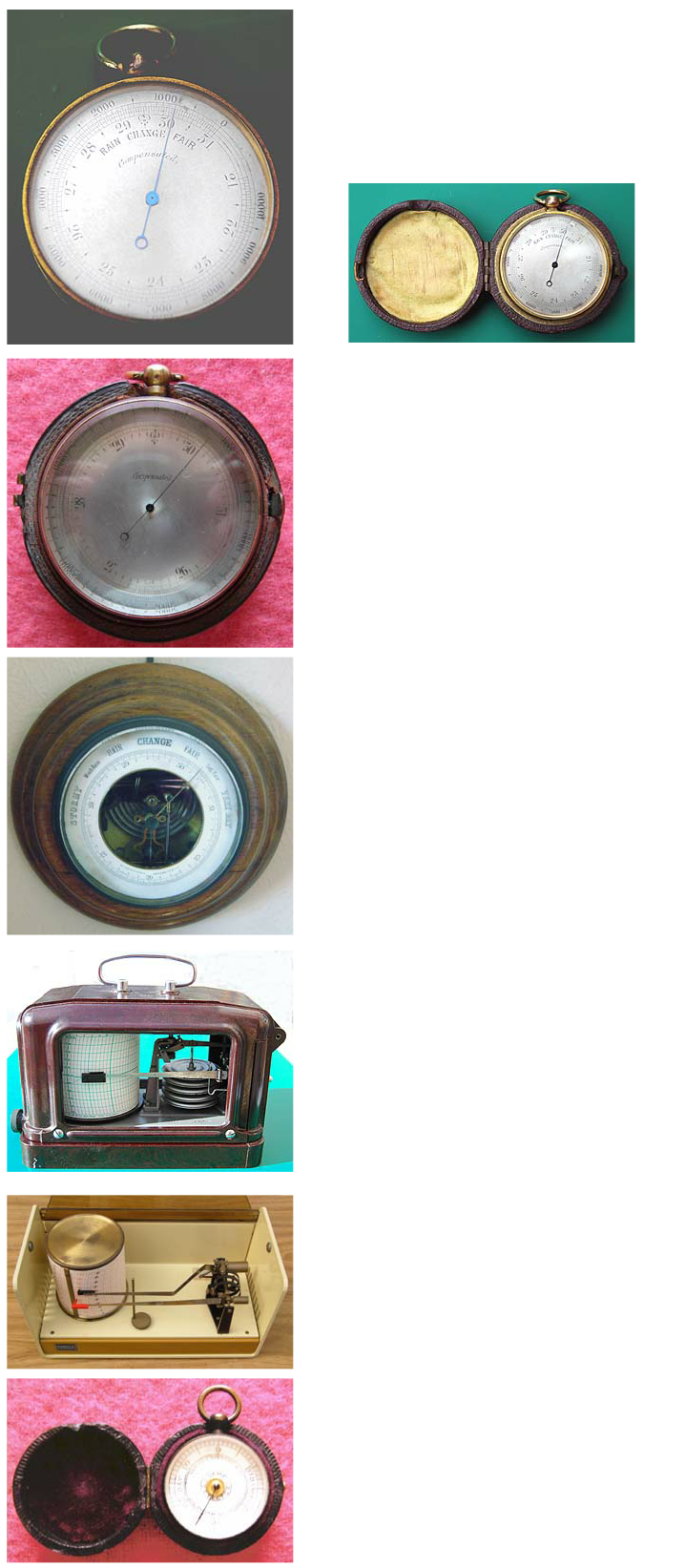
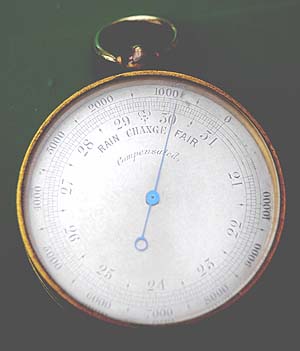
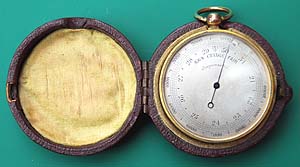
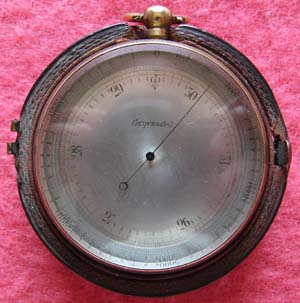
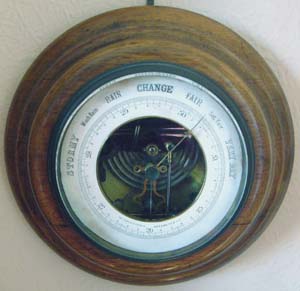
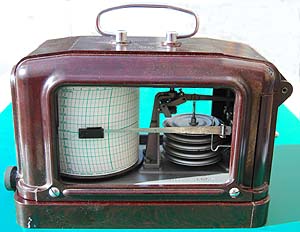
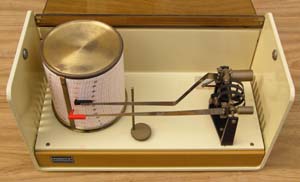
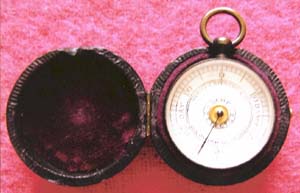
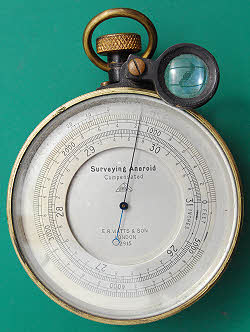
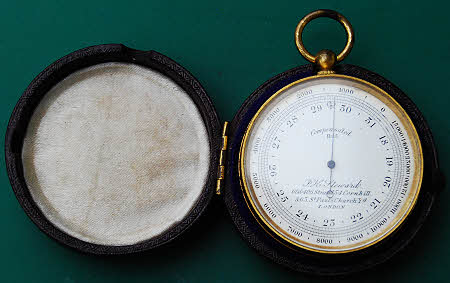
Serial No. 1145, it is compensated and has a gilded brass case and silvered dial.
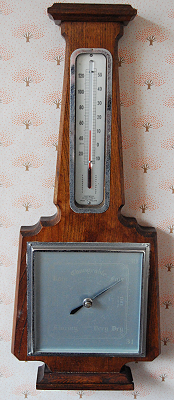
SB -

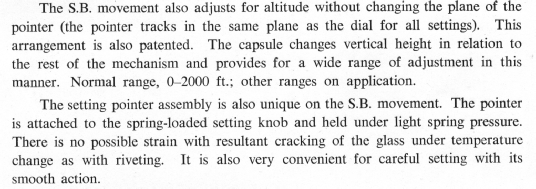
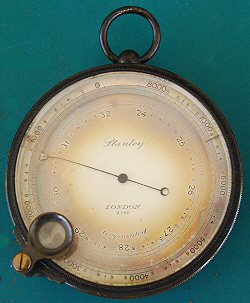
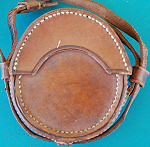 W F Stanley three inch surveying aneroid no.2046. The atmospheric pressure scale
runs from 24 to 32 inches (of mercury) and the altitude scale from 0 to 8,000 feet.
There are two knurled rings around the upper part of the body. The upper one rotates
the pointer on the fixed altitude scale so that it can be set against the indicator
on the hand and the lower one rotates the magnifier which can also be raised to focus.
The dials are stained and tarnished but it is in good working order. The sling case
straps are broken.
W F Stanley three inch surveying aneroid no.2046. The atmospheric pressure scale
runs from 24 to 32 inches (of mercury) and the altitude scale from 0 to 8,000 feet.
There are two knurled rings around the upper part of the body. The upper one rotates
the pointer on the fixed altitude scale so that it can be set against the indicator
on the hand and the lower one rotates the magnifier which can also be raised to focus.
The dials are stained and tarnished but it is in good working order. The sling case
straps are broken.
| Early Sets |
| Traditional Sets |
| Later Sets |
| Major Makers |
| Instruments |
| Miscellanea |
| W F Stanley |
| A G Thornton |
| W H Harling |
| Elliott Bros |
| J Halden |
| Riefler |
| E O Richter |
| Kern, Aarau |
| Keuffel & Esser |
| Compasses |
| Pocket compasses |
| Beam compasses |
| Dividers |
| Proportional dividers |
| Pens |
| Pencils |
| Rules |
| Protractors |
| Squares |
| Parallels |
| Pantographs |
| Sectors |
| Planimeters |
| Map Measurers |
| Miscellaneous |
| Materials Used |
| Who made them |
| Who made these |
| Addiator |
| Addimult |
| Other German |
| USA |
| Miscellaneous |
| Microscopes |
| Barometers |
| Hydrometers & Scales |
| Pedometers |
| Surveying Instruments |
| Other instruments |
| Workshop Measuring Tools |
| Catalogues & Brochures |
| Levels & Theodolites |
| Compasses & Clinometers |
| Miscellaneous surveying |
| Micrometers & Verniers |
| Engineering rules and gauges |
| Wood rules & calipers |
| Dial gauges & miscellaneous |